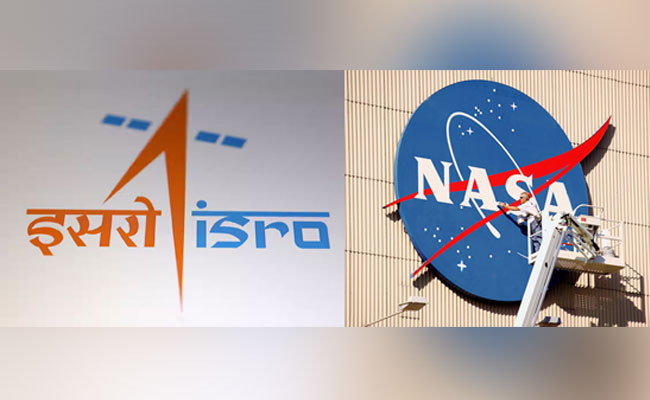Bengaluru (PTI): The NASA-ISRO Synthetic Aperture Radar (NISAR) is set to be launched in the first quarter of 2024 after a few tests, particularly those related to vibration, NASA officials have said.
"ISRO is projecting the first quarter of next year. So, I mean, that's ready," NASA NISAR Project Manager Phil Barela said during a media interaction here on Wednesday.
He is expecting the launch of NISAR (spelt as 'Naisar') "not earlier than January" from the Satish Dhawan Space Centre at Sriharikota aboard the ISRO Geosynchronous Satellite Launch Vehicle Mark-II.
The mission, which has three-year duration, aims to survey all of Earth's land and ice-covered surfaces every 12 days. This will start after a 90-day satellite commissioning period.
Regarding the key tests that are pending to be undertaken, Barela said, "The vibration testing that's underway, but there's a whole slew of performance tests that we need to do."
Battery and simulation tests have to be done to make sure that the system works fine, he said.
"...we'll be doing performance testing on the radars and various spacecraft electronics. So, a lot of testing remains but the big environments test, the only one remaining now, is vibration," Barela said.
NASA Jet Propulsion Laboratory Director Dr Laurie Leshin said the NISAR project is "better than anything that was flown in the past".
"While there are datasets from past missions that can form sort of a baseline, this is a new level of capability that we will have with NISAR," she had told reporters on Tuesday.
"If it's working very well, we will almost certainly extend that mission to get that longer baseline. It is a very important thing to see the Earth change on multi-year timescales. This is what we are looking for," Leshin had said.
According to ISRO, NISAR is a Low Earth Orbit (LEO) observatory being jointly developed by it and NASA.
NISAR will map the entire globe in 12 days and provide spatially and temporally consistent data for understanding changes in the Earth's ecosystems, ice mass, vegetation biomass, sea level rise, ground water and natural hazards, including earthquakes, tsunamis, volcanoes and landslides.
In a handout, NASA said the project aims to understand the dynamics of carbon storage and uptake in wooded, agricultural, wetland and permafrost ecosystems and the response of ice sheets to climate change, the interaction of sea ice and climate, and impacts on sea level rise worldwide.
NISAR will have Synthetic Aperture Radar Instrument (SAR), L-band SAR, S-band SAR and Antenna reflector.
According to NASA, the onboard instruments can even see a minor change of even one centimetre from space.
The SUV-size satellite has a mass of roughly 2,800 kg, which will be powered by two solar arrays providing about four kilowatts of power.
The six feet tall spacecraft bus' will contain the command and communication systems for the instrument payload, which houses the two SAR instruments.
"The bus' will also support the radar antenna reflector and its boom. There is enough fuel aboard to support at least five years of operations," the handout said.
Let the Truth be known. If you read VB and like VB, please be a VB Supporter and Help us deliver the Truth to one and all.
Jhansi: A Dalit youngster was assaulted and humiliated by a group of men in a village under Premnagar police station limits on November 22, after being taken away on the pretext of being offered a cigarette. The incident came to wider attention after a video of the assault surfaced on Thursday.
According to the complaint, the youngster was standing near Goswami Restaurant in Rajgarh when Nishant Saxena, Sukrit and Kanishk approached him and asked him to accompany them. He was allegedly taken on a scooter to Saxena’s house, where two others Bhanu Pal and Ravindra were present. The group is accused of beating him with slippers, fists, kicks and sticks, abusing him with caste slurs, recording the assault on video and threatening him with a firearm, The Observer Post reported.
The video shows the youth being repeatedly slapped and kicked, forced to apologise, and made to touch one of the assailants’ feet. It also shows a man, identified as Saxena, pointing a firearm at him and ordering him to undress. The youngster is heard pleading with folded hands, saying he does not want to be taken to the police station.
CO Sadar Ramveer Singh said a case has been registered under sections of the Bharatiya Nyaya Sanhita and the SC/ST (Prevention of Atrocities) Act. He confirmed that three accused Sukrit, Anand Nayak and Kanishk Ahirwar have been arrested, while the main accused, Nishant Saxena, remains absconding.





